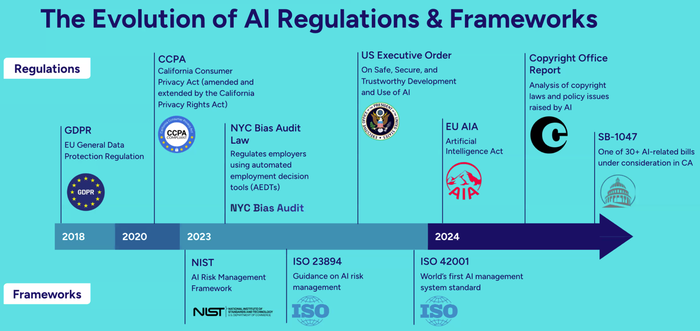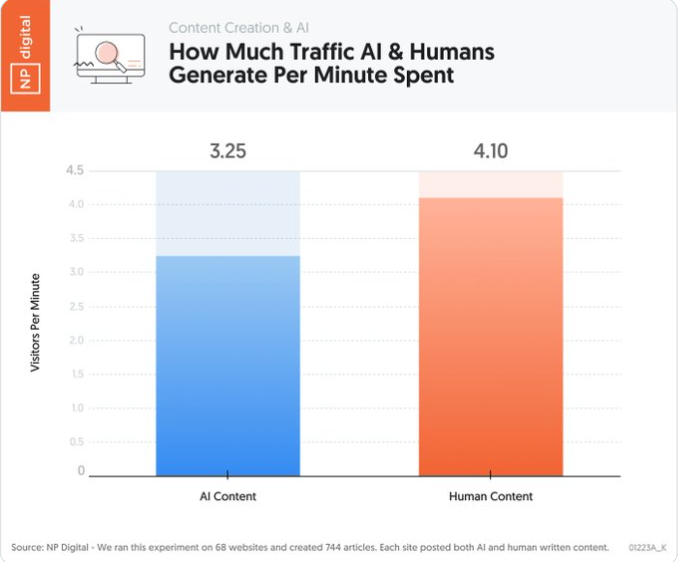In today's digital landscape, artificial intelligence (AI) plays a significant role in generating content across various platforms. As a content creator, you may wonder how to embrace the efficiency of AI while ensuring transparency and maintaining your audience's trust. Transparency is essential because consumers are increasingly looking for authenticity in digital content. Research indicates that over 80% of consumers believe AI-generated material should be labeled, while 62% feel that transparency enhances their trust in brands. Given these trends, understanding how to navigate the intersection of automation and transparency is crucial for your success.
This guide will explore industry standards, legal regulations, best practices, and emerging trends related to AI in content creation. By focusing on these aspects, you can effectively balance the use of AI tools with the need to foster trust and credibility among your audience. Whether you are crafting a marketing campaign, writing an article, or producing multimedia content, incorporating transparency into your workflow will help position you as a responsible and ethical creator in an evolving landscape.
Why Transparency Matters When Using AI for Content Creation
Transparency in AI content creation involves openly communicating the use of AI tools and their contributions to the final output. As consumers become more aware of AI’s capabilities, they expect clear labeling and disclosures regarding AI-generated materials. More than 80% of consumers believe that AI-created content should be transparent, highlighting a fundamental shift in audience attitudes toward authenticity.
When you prioritize transparency, you not only build trust but also differentiate your brand in a crowded digital space. For instance, companies like Nike that implement clear disclosures about their use of AI in marketing campaigns can enhance consumer perception and create a positive brand image. You can achieve similar results by being upfront about how you utilize AI technologies in your content creation process.
Infographic illustrating consumer attitudes towards AI-generated content and the importance of transparency (Source: Holistic AI)
Navigating the Legal Landscape of AI and Content Creation
As AI technology continues to develop, so do its associated legal and regulatory frameworks. In the United States, the California AI Transparency Act mandates that providers include clear disclosures about their use of AI in content creation, effective January 1, 2026. Similarly, the Federal Trade Commission (FTC) has established guidelines requiring the involvement of AI in marketing and content to be clearly disclosed to consumers.
Globally, various regions are developing their regulations in response to the rise of AI. The European Union introduced the Artificial Intelligence Act, which emphasizes documentation and labeling for AI-generated content. Understanding these regulations is essential for you as a content creator to ensure compliance while shaping your content strategy. Staying informed about the evolving legal landscape will help you navigate the regulatory environment surrounding AI content creation effectively.
 Flowchart detailing various AI legislation timelines by region, showcasing regulatory progress (Source: ContentStack)
Flowchart detailing various AI legislation timelines by region, showcasing regulatory progress (Source: ContentStack)
Key Strategies for Ensuring Ethical Standards in Your AI Content
To maintain high ethical standards in your AI-generated content, it’s crucial to establish clear guidelines for how AI tools are used. Start by identifying when and how AI is deployed in your content creation process. Using an ethical AI canvas can help you conduct audits and ensure compliance with industry best practices.
Human oversight is essential when assessing AI-generated content. Ensure that a team member reviews AI outputs to verify their accuracy, relevance, and alignment with your brand's voice. This practice not only mitigates potential issues but also makes sure that your creativity isn't overshadowed by automation.
In addition, consider developing templates for disclosure statements to communicate your content's AI involvement effectively. By implementing these practices, you will not only enhance transparency but also build trust with your audience.
 Graphic presenting an ethical AI canvas for evaluating AI content ethics (Source: AI Open Charter)
Graphic presenting an ethical AI canvas for evaluating AI content ethics (Source: AI Open Charter)
Building a Case for Transparency: Tools and Templates You Can Use
As a content creator, adopting practical tools to enhance your transparency regarding AI use is crucial. Start by creating templates for disclosure statements that outline how AI contributes to your content. This not only simplifies your process but also standardizes your approach across your organization.
Additionally, leverage labeling systems designed for AI-generated content. Platforms like YouTube and TikTok have implemented tools that allow creators to mark AI-generated segments, providing viewers with clarity. These tools facilitate transparency and align your practices with industry standards.
Incorporating checklists for ethical content creation can further enhance your transparency efforts. These resources guide you in evaluating your content's compliance with ethical standards, ensuring that you remain accountable throughout your content creation process.
 Screenshot of popular AI labeling systems that illustrates the integration of transparency tools (Source: Brafton)
Screenshot of popular AI labeling systems that illustrates the integration of transparency tools (Source: Brafton)
What to Review When Assessing AI-Generated Content Quality
When reviewing AI-generated content, it's essential to recognize the potential loss of the personal touch that often accompanies automated processes. While AI can generate accurate information, it may lack the creativity and depth that truly resonates with your audience. Critically evaluate whether the AI-generated content reflects your brand's identity and voice.
Additionally, ensure that your content adheres to search engine optimization (SEO) best practices. Google's recent updates highlight the need for high-quality content that meets their E-E-A-T (Expertise, Experience, Authoritativeness, Trustworthiness) criteria. Striking a balance between AI efficiency and human creativity will help you achieve both quality and visibility.
 Image comparing AI-generated content with human-edited content to highlight quality differences (Source: Neil Patel)
Image comparing AI-generated content with human-edited content to highlight quality differences (Source: Neil Patel)
Emerging Trends Shaping the Future of AI Content Transparency
The future of AI in content creation is expected to bring about significant changes. One noteworthy trend is the push for content labeling, where AI-generated materials will bear explicit labels indicating their origin. This aligns with consumer expectations for transparency, with over 80% of individuals believing that AI-created content should be clearly identified.
The implementation of governance and ethics committees within organizations is also gaining traction. These entities will oversee the ethical use of AI, ensuring that companies remain responsible and transparent in their practices. As new AI models develop, the emphasis on transparency and ethical considerations will become more pronounced, paving the way for more intelligent content strategies.
 An infographic timeline illustrating the evolution of AI technologies and related regulations (Source: Digital Wellbeing)
An infographic timeline illustrating the evolution of AI technologies and related regulations (Source: Digital Wellbeing)
Final Thoughts: Striking the Balance Between Innovation and Integrity
As you navigate the complex landscape of AI in content creation, it is essential to balance innovation with integrity. Emphasizing transparency in your practices will not only build trust with your audience but also contribute to your brand's authenticity.
Take actionable steps to ensure the disclosure of AI involvement in your content, implement ethical guidelines, and foster ongoing dialogues with your audience. By doing so, you position yourself as a leading voice in responsible content creation, making your mark in a future where AI tools play a vital role in the industry.
 Inspirational quote from Julie Sweet emphasizing the importance of transparency (Source: BrainyQuote)
Inspirational quote from Julie Sweet emphasizing the importance of transparency (Source: BrainyQuote)
By integrating these insights and strategies into your workflows, you can harness the power of AI while maintaining the human touch and transparency necessary for connecting with your audience. Remember, transparency isn't just a practice—it's a philosophy that fosters trust and cultivates a meaningful relationship with your audience.

评论(0)
登录 参与讨论或 .